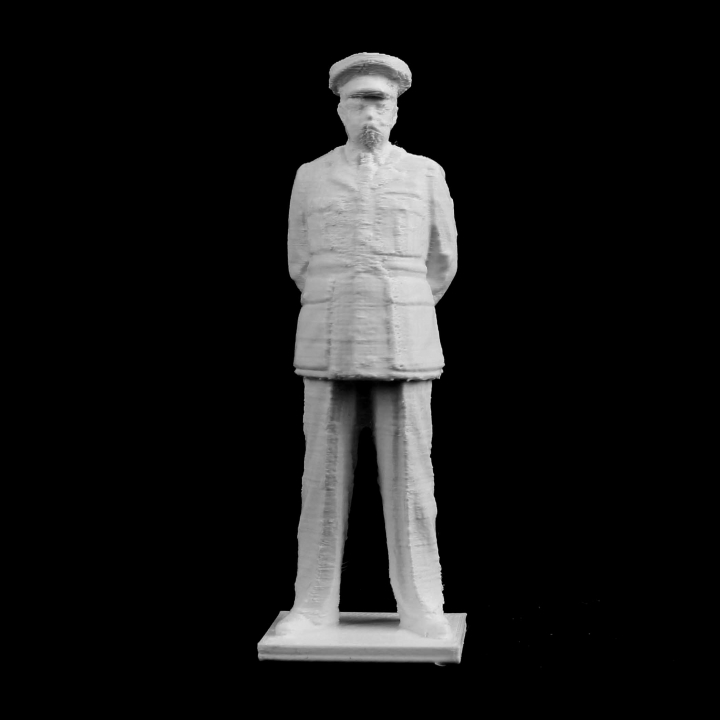
Sir Arthur Harris at the Strand, London
myminifactory
This is a bronze sculpture now on permanent public display along The Strand in London depicting Sir Arthur Harris. The plaque on the base of the sculpture reads, "Marshal of the Royal Air Force, Sir Arthur Harris BT GCB OBE AFC. In Memory of a great commander and of the brave crews of bomber command, more than 55,000 of whom lost their lives in the cause of freedom. The nation owes them all an immense debt". Marshal of the Royal Air Force Sir Arthur Travers Harris, 1st Baronet GCB, OBE, AFC (13 April 1892 – 5 April 1984), commonly known as "Bomber" Harris by the press, and often within the RAF as "Butcher" Harris, was Air Officer Commanding-in-Chief (AOC-in-C) RAF Bomber Command during the latter half of the Second World War. In 1942, the British Cabinet agreed to the "area bombing" of German cities. Harris was tasked with implementing Churchill's policy and supported the development of tactics and technology to perform the task more effectively. Harris assisted British Chief of the Air Staff Marshal of the Royal Air Force Charles Portal in carrying out the United Kingdom's most devastating attacks against the German infrastructure and population, including the Bombing of Dresden. In 1910, at the age of 17, Harris emigrated to Southern Rhodesia, but he returned to England in 1915 to fight in the European theatre of the First World War. He joined the Royal Flying Corps, with which he remained until the formation of the Royal Air Force in 1918, and he remained in the Air Force through the 1920s and 1930s, serving in India, Mesopotamia, Persia, Egypt, Palestine, and elsewhere. At the outbreak of the Second World War in 1939, Harris took command of No. 5 Group RAF in England, and in February 1942 was appointed head of Bomber Command. He retained that position for the rest of the war. After the War Harris moved to South Africa where he managed the South African Marine Corporation. Harris's continued preference for area bombing over precision targeting in the last year of the war remains controversial, partly because by this time many senior Allied air commanders thought it less effective and partly for the large number of civilian casualties and destruction this strategy caused in Continental Europe. This object is part of "Scan The World". Scan the World is a non-profit initiative introduced by MyMiniFactory, through which we are creating a digital archive of fully 3D printable sculptures, artworks and landmarks from across the globe for the public to access for free. Scan the World is an open source, community effort, if you have interesting items around you and would like to contribute, email stw@myminifactory.com to find out how you can help.
With this file you will be able to print Sir Arthur Harris at the Strand, London with your 3D printer. Click on the button and save the file on your computer to work, edit or customize your design. You can also find more 3D designs for printers on Sir Arthur Harris at the Strand, London.
